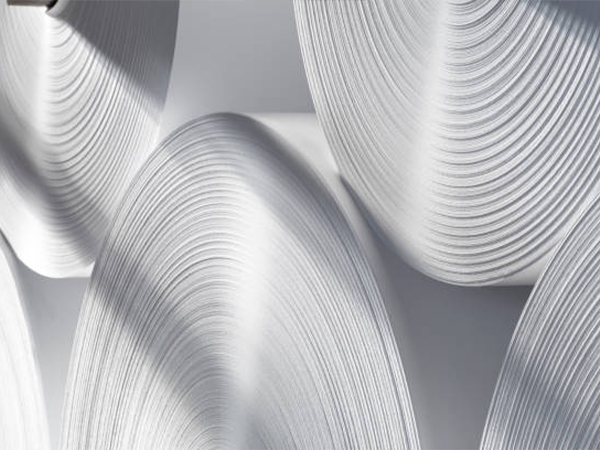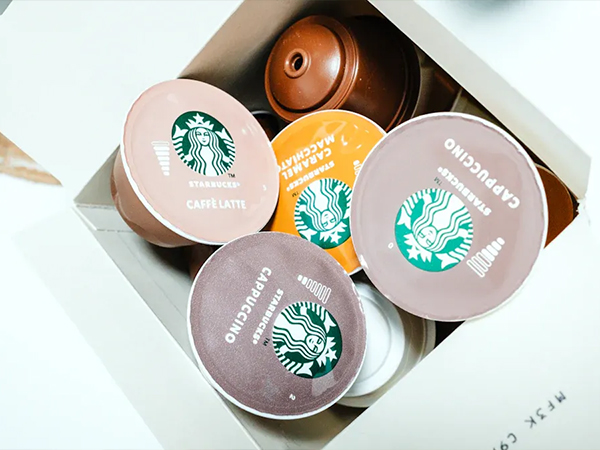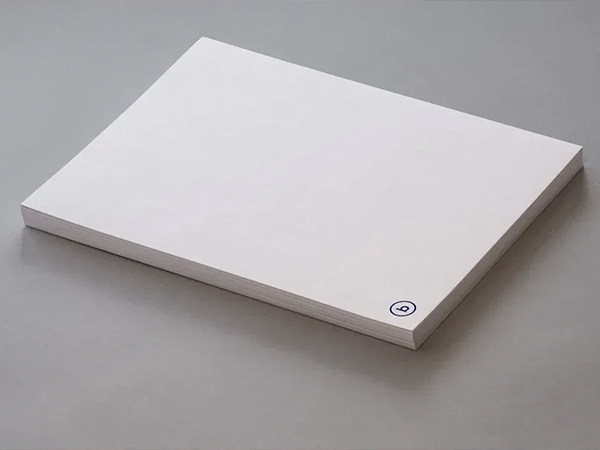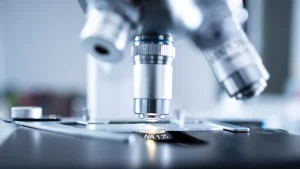
Wet strength remains essential for paper products that must perform in damp or wet conditions. Modern paper makers face significant challenges during production. Rapid water removal, densification of surface layers, and plugging of drainage channels often reduce paper strength and slow production. Insufficient pulp washing can cause hydrophobic particles to accumulate, which interferes with cationic chemicals and reduces the effectiveness of a wet strength agent. These issues lead to defects, web breaks, and off-spec production. Selecting the right agent ensures quality, compliance, and sustainability.
Key Takeaways
- Wet strength agents help paper stay strong and intact when wet by forming strong bonds with fibers, unlike dry strength agents.
- Synthetic agents like PAE offer high performance and durability, while natural agents like chitosan support sustainability but may have lower strength.
- Hybrid agents combine synthetic and natural materials to improve strength and environmental friendliness, representing the future of papermaking.
- Choosing the right wet strength agent depends on paper type, end use, and regulatory requirements to balance quality, safety, and cost.
- Proper dosage, curing, and process control maximize wet strength agent effectiveness and help prevent common production problems.
Wet Strength Agent Overview
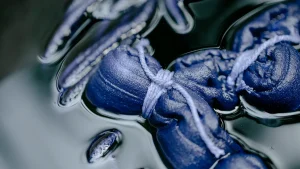
Definition and Role
A wet strength agent gives paper the ability to maintain its integrity and strength when exposed to moisture. Unlike dry strength agents, which rely on hydrogen bonds that break down in water, wet strength agents form covalent bonds and crosslinks with cellulose fibers. This chemical network resists water and prevents the paper from falling apart during wetting and drying cycles. Synthetic agents, such as polyamidoamine epichlorohydrin (PAE), create strong covalent bonds, while natural agents like starch and chitosan use hydrogen bonding. These agents not only reinforce the paper but also make fiber surfaces more hydrophobic, reducing fiber separation in wet conditions. Manufacturers add most synthetic wet strength agents directly to the paper slurry, while natural agents often go on the paper surface. This approach ensures the paper remains strong and durable, even after repeated exposure to water.
Tip: Choosing the right wet strength agent can boost both wet and dry strength, but only wet strength agents provide true moisture resistance.
Applications
Wet strength agents play a vital role in many paper products that must perform under wet or humid conditions. Towel and facial tissue manufacturers rely on these agents to ensure products stay intact after rewetting. PAE resin stands out as a popular choice, delivering high wet tensile index and efficient wet strength performance. High performance in these areas reduces chemical usage and improves machine runnability, preventing issues like poor drainage and sheet breaks.
Paper packaging also benefits from wet strength agents. Products like chitosan and nanofibrillated cellulose (NFC) can increase wet tensile strength by up to 13 times and stretch by over five times. These improvements help packaging resist moisture and mechanical stress, while biodegradable additives address sustainability concerns.
The table below summarizes the main categories and classifications of wet strength agents:
| Category | Classification | Chemical Nature | Bonding Mechanism | Examples |
|---|---|---|---|---|
| Wet Strength Agents | Temporary Wet Strength | Aldehyde-based polymers | Hemiacetal bonds with cellulose hydroxyls | Dialdehyde starch (DAS), Glyoxal (GX), Glyoxylated polyacrylamide (GPAM) |
| Permanent Wet Strength | Synthetic resins and polymers | Covalent bonding or crosslinking | Polyamidoamine epichlorohydrin (PAAE), Polyamine epichlorohydrin (PAmE), Urea-formaldehyde (UF), Melamine-formaldehyde (MF), Polyethylene imine (PEI), Polyvinyl amines (PVAm) | |
| Natural Wet Strength | Biodegradable polymers | Various (e.g., hydrogen bonding, covalent) | Modified starch, Chitosan, Modified cellulose nanofibrils, Soy protein, Lignin |
Synthetic wet strength agents dominate the market, with PAAE holding over 80% share. Natural agents offer environmental benefits but may face performance or cost challenges. Selecting the right agent ensures paper products meet both performance and sustainability goals.
Types of Wet Strength Agents
Synthetic Agents
Synthetic agents dominate the wet strength market due to their high efficiency and versatility. Polyamide-amine-epichlorohydrin (PAE) stands out as the most widely used wet strength agent. PAE is a cationic polymer that contains azetidinium groups. These groups form strong covalent bonds with the carboxyl groups on cellulose fibers. The process begins with electrostatic attraction, followed by curing at elevated temperatures, which locks the fibers together with water-insoluble bonds. This mechanism delivers excellent wet strength, making PAE ideal for tissue, towel, and packaging papers.
Melamine-formaldehyde (MF) and urea-formaldehyde (UF) resins also serve as important synthetic wet strength agents. MF resins provide superior water resistance because of their stable C–N bonds. When manufacturers add melamine to UF resins, the resulting MUF resins show improved wet strength and lower formaldehyde emissions. This improvement meets stricter environmental standards and reduces health risks. However, MF and MUF resins require longer curing times or higher temperatures. UF resins alone offer lower cost but fall short in water resistance and environmental performance.
Glyoxylated polyacrylamide (GPAM) and polyvinyl amines (PVAm) are other synthetic options. These agents create crosslinks with cellulose, enhancing wet strength in specialty papers and packaging. Synthetic agents deliver reliable performance, but environmental regulations and sustainability goals push the industry to seek alternatives.
Note: Synthetic wet strength agents offer unmatched performance, but careful selection is essential to balance efficiency, cost, and compliance.
Natural Agents
Natural wet strength agents appeal to paper makers who prioritize sustainability and regulatory compliance. Cationic starch is a leading choice. Its positive charges interact with the carboxylic groups on cellulose, creating strong adhesion and wettability. This interaction boosts wet strength, especially in applications like food packaging and specialty papers. However, not all starch derivatives perform equally. For example, starch PPC adhesives show lower wet strength due to weaker surface affinity.
Chitosan, a biopolymer derived from chitin, offers unique advantages. It provides mechanical support, enhanced adhesion, and even antimicrobial properties. Chemical modifications improve chitosan’s solubility and mechanical strength, making it more effective as a wet strength agent. Chitosan stands out for its biocompatibility, biodegradability, and ability to maintain a moist environment. These features make it suitable for medical papers, food packaging, and eco-friendly products. However, some forms of chitosan have lower mechanical strength and may require further optimization.
| Natural Agent | Key Benefits | Typical Use Cases | Limitations |
|---|---|---|---|
| Cationic Starch | Strong adhesion, good wettability | Food packaging, specialty papers | Lower performance in some forms |
| Chitosan | Biodegradable, antimicrobial, flexible | Medical papers, eco-packaging | Lower strength in some derivatives |
🌱 Natural agents help paper makers meet sustainability targets and reduce environmental impact.
Hybrid and Emerging Types
Hybrid and emerging wet strength agents combine the best features of synthetic and natural materials. These agents integrate bio-based polymers with advanced synthetic polymers or nanomaterials. The goal is to enhance moisture resistance and mechanical strength while supporting sustainability.
Recent developments include combining PAE with additives like bentonite or cellulose nanofibers. This hybrid approach forms hydrophobic covalent bonds and restricts fiber swelling. As a result, paper products gain improved wet strength and water barrier properties. Hybrid agents also allow for reduced PAE dosage, which lowers the production of harmful organochlorine compounds. This shift supports both performance and environmental goals.
Other hybrid systems use amphoteric polyacrylamide (AmPAM) with cationic starch. AmPAM increases breaking length and retention, especially in recycled fiber applications. The use of cellulose nanofibers with wet strength polymers further reduces the need for synthetic agents, promoting sustainability.
- Hybrid agents blend synthetic and natural components for tailored performance.
- They support recyclable and compostable paper products.
- Advances in nanotechnology and polymer science drive innovation in this area.
- The market is moving toward application-specific and eco-friendly solutions.
🚀 Hybrid wet strength agents represent the future of paper making, offering both high performance and environmental responsibility.
Wet Strength Agent Mechanisms
Chemical Structures
The chemical structure of each wet strength agent determines its effectiveness and suitability for different paper products. Manufacturers design these agents with specific functional groups that react with cellulose fibers, forming strong and durable bonds. The table below highlights the key chemical structures of the most common agents and explains how these structures influence their reactivity and performance:
| Wet Strength Agent | Key Chemical Structures | Influence on Reactivity and Wet Strength |
|---|---|---|
| Polyamidoamine Epichlorohydrin (PAAE) | Epichlorohydrin-based resin with reactive azetidinium groups | Forms covalent cross-links with paper fibers, greatly enhancing wet strength. Toxic by-products require careful purification. |
| Oxidized Hydroxypropyl Cellulose (keto-HPC) | Hydroxypropyl cellulose modified to introduce terminal ketone groups | Ketone groups react with polyamines, creating strong cross-links that boost interfiber bonding and wet tensile strength. |
| Polyamines (e.g., polyethylenimine, chitosan, aminated Kraft lignin) | Multiple amine groups; chitosan is biogenic and biodegradable | High amine content allows extensive cross-linking, improving wet strength. Biogenic polyamines add sustainability and extra properties like antibacterial action. |
| Molecular Weight and Polymer Distribution | High molecular weight polymers | More cross-links and stronger mechanical reinforcement in wet conditions. |
The four-membered azetidinium ring in PAAE stands out as a highly effective functional group for developing wet strength in paper. Polyelectrolyte complexes formed between PAAE and carboxymethyl cellulose (CMC) further improve wet strength, outperforming PAAE alone. Guanidino groups in guanidine polymers add antimicrobial activity, which can be combined with wet strength groups for dual-function paper products.
Manufacturers also pay close attention to molecular weight and the ratio of functional groups. For example, glyoxalated polyacrylamide (GPAM) resins rely on the right balance of molecular weight and reactive aldehyde groups to achieve optimal performance. High molecular weight and controlled functional group content lead to more effective cross-linked networks, which translates to better wet strength and longer shelf life.
🧪 The right chemical structure unlocks superior wet strength and opens the door to advanced, sustainable paper products.
Bonding and Performance
The performance of a wet strength agent depends on the types of bonds it forms with cellulose fibers. Two main mechanisms drive wet strength development:
- Protection Mechanism: The agent cross-links with itself, creating an insoluble network. This network prevents fiber swelling and stops bonds from breaking when the paper gets wet.
- Reinforcement Mechanism: The agent forms covalent bonds with cellulose fibers, supplementing the natural hydrogen bonds. These covalent bonds remain intact in water, maintaining the strength of fiber-fiber joints.
Polyamideamine-epichlorohydrin (PAE) demonstrates both mechanisms. It forms covalent ester bonds between its azetidinium groups and the carboxyl groups on cellulose. Heating during the curing process increases the number of these bonds, resulting in stronger wet strength. The cationic nature of azetidinium groups also helps PAE attach to cellulose through electrostatic interactions, making crosslinking more efficient.
Other agents, such as NVP-GMA adhesives, form ether bonds with cellulose through ring-opening reactions. Hydrogen bonds also play a role, especially in natural agents like chitosan and starch, but these bonds alone cannot withstand wet conditions. Covalent bonds create a crosslinked polymer network that resists water, prevents fiber swelling, and keeps the paper strong even after repeated exposure to moisture.
Performance varies with environmental conditions. For example, soy-based adhesives show much higher wet shear strength when cured at higher temperatures. At 174 °C, soy adhesives achieve strong wet bonds, while lower temperatures result in immediate failure after soaking. PAE and PVAm polymers also perform better on oxidized cellulose and with proper heat treatment, which promotes crosslinking and grafting reactions.
- High molecular weight and controlled functional group content improve wet strength and shelf stability.
- The right curing temperature maximizes bond formation and wet strength.
- Combining wet strength and antimicrobial groups creates paper with added value for hygiene and food safety.
💡 Choosing the right wet strength agent and optimizing its application ensures paper products stay strong, reliable, and compliant—even in the toughest wet conditions.
Selection Factors
Paper and End Use
Paper makers must match the agent to the specific paper grade and its intended use. Tissue papers, such as facial tissues and towels, often tolerate higher levels of by-products. This flexibility allows the use of G2 and G2.5 generation agents, which offer strong performance. Packaging papers, especially those in contact with food, require stricter controls. These grades demand G3 agents with much lower by-product content to meet safety standards.
End-use requirements shape the choice between temporary and permanent wet strength. For example, away-from-home towels benefit from temporary agents like modified glyoxylated polyacrylamide. These agents provide short-term strength and improve machine efficiency. Permanent agents, such as PAE resins, suit products that need lasting wet strength. Specialty papers may require agents that balance strength, sustainability, and machine performance. Monitoring process water chemistry and optimizing resin dosage help achieve the best results for each application.
📝 Tip: Always consider fiber composition, agent dosage, and purity to balance compliance, performance, and cost.
Regulatory and Sustainability
Regulatory compliance stands as a top priority. In Europe, strict rules like REACH and Germany’s BfR Recommendation XXXVI set limits on by-products and chemical use. These regulations protect consumers, especially for food-contact papers. The EU requires detailed testing and documentation, while North America focuses on general safety and good manufacturing practices. Ecolabels and Green Seal certifications further tighten requirements, pushing mills to use agents with low chloro-organic content and reduced AOX levels.
Sustainability now drives innovation. Mills seek agents that lower environmental impact and support recycling. High-efficiency resins, such as FennoStrength, allow reduced chemical use and lower costs. Advances in production, like alkaline treatment and ion exchange, help tailor agents to meet both regulatory and environmental goals. The market trend favors bio-based and formaldehyde-free options, reflecting growing demand for safe and sustainable paper products.
| Factor | Tissue Paper | Packaging Paper (Food Contact) |
|---|---|---|
| By-product Tolerance | Higher (G2, G2.5) | Very Low (G3) |
| Regulatory Pressure | Moderate | High |
| Sustainability Focus | Growing | Essential |
| Cost Sensitivity | High | High |
🌍 Choose agents that meet both compliance and sustainability targets to future-proof your paper products.
Application Tips
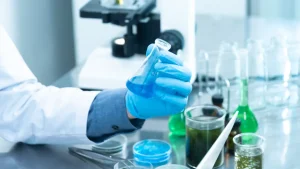
Dosage and Integration
Paper mills achieve the best results when they add strength agents at the wet end of the papermaking process. This stage allows the agent to interact directly with cellulose fibers in the slurry. For example, chitosan works well when dissolved in water or acid and introduced before sheet formation. This method forms strong bonds with cellulose, improving both dry and wet strength. The molecular weight of chitosan affects how well it flocculates fibers, which impacts retention and drainage. These factors play a key role in process efficiency and final product quality.
Process monitoring systems, such as fiber potential analyzers, help mills adjust chemical dosage in real time. These systems measure the zeta potential of fibers and track the charge environment in the pulp. By using this data, mills can add the right amount of agent for each product type. For instance, they can boost strength for kitchen towels but avoid unnecessary chemicals in toilet paper. This approach saves resources, prevents overdosing, and ensures consistent product quality.
Tip: Always monitor pH, additive concentration, and charge balance. These steps maximize agent efficiency and support sustainable production.
Troubleshooting
Operators often face challenges when using strength agents. Common issues include low wet strength, poor curing, and repulping difficulties. The following table summarizes frequent problems and practical solutions:
| Problem | Solution |
|---|---|
| Low wet strength | Adjust pH (target 3–8), refine pulp, check drying/curing |
| Poor resin retention | Monitor cationic starch levels, control additive interactions |
| Resin degradation | Minimize oxidizing agents like chlorine dioxide |
| Repulping difficulties | Use high shear, heat, and time; apply chemical treatments if needed |
- Check and adjust pH to optimize resin retention and curing.
- Refine pulp to increase fiber surface area for better agent adsorption.
- Avoid excess cationic starch and oxidizing agents that can degrade resins.
- Ensure proper drying and curing, using oven or storage curing if necessary.
- For repulping, apply high shear and heat, or use chemicals for bleached pulps.
🛠️ Quick action and process control help mills solve problems fast and maintain high-quality paper.
Manufacturers today can choose from a wide range of wet strength solutions, including permanent and temporary agents with advanced chemical structures. Selecting the right option for each paper grade ensures compliance with strict regulations and supports sustainability goals. Industry leaders now invest in bio-based, biodegradable, and high-efficiency formulations. Partnerships and new technologies drive rapid progress, helping companies meet rising demand for eco-friendly, high-performance paper products. The future promises even smarter, safer, and more sustainable solutions.
FAQ
What is the main benefit of using wet strength agents in paper?
Wet strength agents help paper stay strong when wet. They prevent tearing and disintegration. Paper makers who use these agents can produce higher-quality products that meet customer demands for durability and reliability.
Are natural wet strength agents as effective as synthetic ones?
Natural agents like chitosan and starch offer eco-friendly benefits. Synthetic agents, such as PAE, deliver higher performance. Many mills now blend both types to balance strength, cost, and sustainability. This approach helps meet strict regulations and customer expectations.
How do wet strength agents impact recycling?
Wet strength agents can make recycling more difficult. Some agents resist water, so fibers do not break down easily. Mills can choose agents designed for easier repulping. This choice supports recycling goals and helps meet environmental standards.
Can wet strength agents be used in food packaging?
Yes, many wet strength agents meet food safety standards. Paper makers should select agents with low by-product content and proven compliance. This ensures safe packaging for food contact and builds trust with consumers.
What factors should guide the choice of a wet strength agent?
Paper makers should consider paper type, end use, regulatory needs, and sustainability goals. They should also evaluate cost and performance. Choosing the right agent improves product quality and supports business growth.


